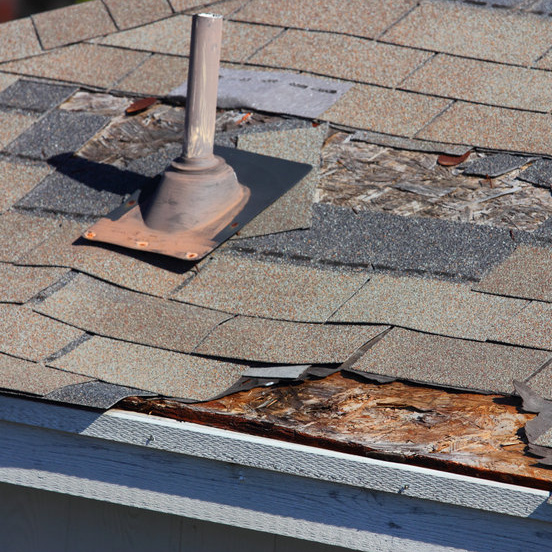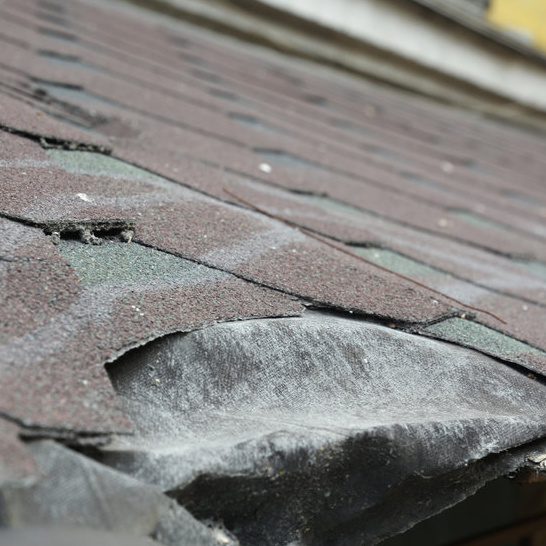
What are the effects of a storm?
Homeowners in Texas are used to the weather changing with the wind, so-to-speak. Sometimes that wind is a light breeze, sometimes it is hurricane or tornado speed, and full of hailstone. So after that wind has died down, we walk around our homes and look for possible storm damage. If there isn’t any, we go on about our day.
What many homeowners don’t realize is that storm damage isn’t always obvious to the naked eye. Especially the untrained, naked eye. There are homeowners that still aren’t sure what can storm cause damage or what is storm damage for sure. It is for those homeowners, we offer this article, answering some questions and providing descriptions that can help the identify storm damage or know when to have an expert inspect their roof for storm damage.
Why the roof in particular? Because that is what is protecting your home. Your home without a roof, your family and belongings would not be protected from the elements. The roof is the first layer of defense against Mother Nature’s storm wraths here in Texas. It also take the sun’s UV rays beating down on it every day and gets the hard gusts of winds. With all that happening, it sometimes doesn’t take much more to cause storm damage, and that damage is not always visible.
Every region of the country will have different effects from the various types of storms that come their way. The storm damage we will feel or see immediately is large amounts of rainfall, high, strong winds, and storm surges.
These things can destroy bridges, buildings, damaged and downed power lines, flood roadways, and leave people stranded. In Texas, our usual storm upset are from hailstones and high winds, and both of these can leave behind storm damage to roofs.
What is wind damage to a roof?
It is typical that the thunderstorms in Texas to include hailstones, strong winds, and generate a tornado, or several tornadoes. All of this can cause storm damage to a home, especially the hail and strong winds to the roof.
The winds that cause the most storm damage are referred to as “straight line winds” and are typically clocked between 50 mph to 60 mph, and can reach 100 mph. Another type of winds are those caused by tornadoes and are from the downdrafts that come with severe thunderstorms.
For homes with asphalt shingled roofs, the most common roofing material in Texas, windstorm damage can include roof damages that include any of the following:
- Cracked, curled, dented, loosened, missing, or torn shingles.
- Asphalt granule loss.
- Chimney damaged includes damaged, loose, and missing bricks, missing chimney cap, and/or leaning chimney.
- Fascia, soffits, and ridge vents damaged, loose, or missing.
- Gutters bent, loose, sagging, or missing.
What if you’ve never noticed these things after a storm has rolled through? There are some things that could indicate either storm damage, or your roof has reached its end-of-life and it is time to get a new roof.
Things like water stains on the ceilings or walls inside your home. Is the paint or wallpaper turning brown or yellow, maybe the paint is cracking in areas? This could be from wind damage to the roof or some other issues. A professional roof inspection will determine if it is storm damage, and the insurance adjuster will determine if it is old or recent storm damage or homeowner neglect.
Are your gutters leaking or sagging, are downspouts broken? These are things that can be storm damage related or aging. In the attic, do you see water stains on the underside of the decking? Is there moisture on the insulation, or signs of mildew or mold?
Are your energy bills higher than normal recently? This could be because the air conditioning or heating is escaping through the attic because of either aging roof or storm damage. These are indicators of either storm damage or poor ventilation. Both of these are things a professional roofing contractor that offers storm damage services can confirm.
Is storm damage covered by insurance?
Maybe, if your homeowner’s insurance has storm damage coverage, which most do, but it should be assumed. Review your policy once a year and any concerns or questions should be addressed now, before you need them.
Usually homeowner’s insurance covers storm damage, but there are limits. The adjust will inspect your roof and other areas that could be damaged by storms. They will determine if there is any issue with homeowner maintenance and upkeep that allowed the damage to be severe.

Is storm damage an act of God?
Severe weather events like hailstorms, heavy rains, high winds, and earthquakes are considered to be acts of God. The resulting storm damage to your home, vehicles, and surroundings are considered to be the results of those acts of God.
If lighting strikes your home and starts a fire, that is an act of God and would be covered under your homeowner’s insurance. If poor electrical wiring causes you home to catch on fire, that is not an act of God and may not be covered under your homeowner’s insurance.
So, after a storm has ripped your roof off or caused significant damage, understandably, you’ll need a new roof. If the insurance adjuster deems that any leaks are due to homeowner neglect, they may agree you need a new roof but decline any claim. So, just how often do you need a new roof?
The average lifespan of a basic asphalt shingle roof is between 12 years and 15 years, if there isn’t any basic homeowner upkeep like have it cleaned, keeping trees cut back, making any minor repairs. With the best maintenance and upkeep, your asphalt shingle roofing could give you up to 20 years lifespan. Call 214-295-5500 today for your storm damage roof repair in Dallas, TX.

